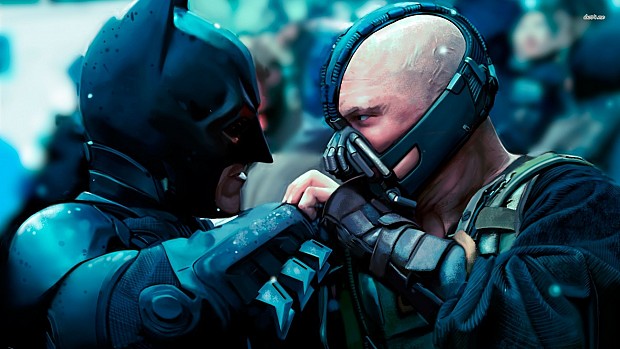
If you watch a film often enough, you are bound to notice its flaws. Most of the time, this flaw is easily forgivable. Sometimes, however, this little flaw becomes a bit more problematic. So much so it might start to make you cringe.
In this list, we are going to look at a collection of great films that do have that one particular moment that will make you wonder, ”what the hell were they thinking?”
We hope none it will tarnish your enjoyment of these films – most these are just goofy little tidbits – and maybe you have noticed them before as well. Maybe these moments of imperfection have become endearing over time.
Be warned, however: Once you see them, you cannot unsee them.
10. The Green Goblin’s mask in Spider-Man (2002)
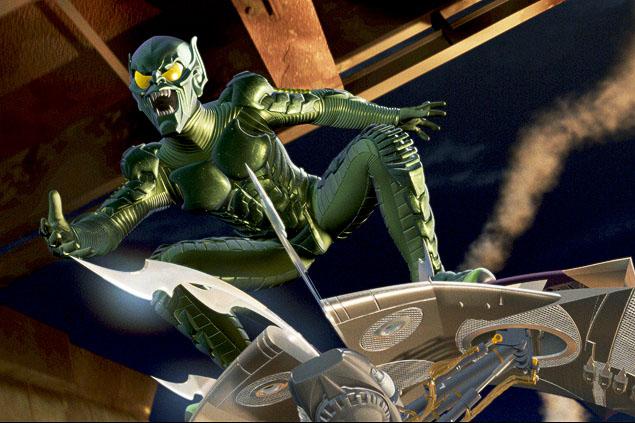
Why it’s great: In this heyday of superhero adaptations, we’re into our second reboot of the infamous webslinger already – in less than 15 years. Granted, there had been several cartoon incarnations, and Tobey Maguire was not the first live-action Spider-Man to ever appear on the big screen; that honor goes to Nicolas Hammond in the lesser-known 1977 adaptation that appeared in theaters overseas.
One could say that the 2002 version could also be considered a reboot, but that would be stretching it. Sam Raimi’s adaptation of “Spider-Man” in 2002 was an absolute game changer. Along with Bryan Singer’s “X-Men”, it spawned the seeds of the superhero craze that was to come – though naturally, nobody could have guessed that it would have become this big.
Raimi had already proved himself to be an excellent action director and perfect for the comic book genre. His composes his action scenes as if they come straight from the comic book panels. There’s a youthful energy, a childlike excitement to the spectacle.
At first Raimi had tried to adapt “The Shadow”, which eventually became an Alec Baldwin vehicle, but when he couldn’t get the rights, he invented his own comic book style character with “Darkman”, one of the best comic book-style films not based on an actual comic book. When Raimi finally got the chance to do “Spider-Man”, a beloved character that fans had been waiting decades to see on the big screen, there was every reason to be excited.
While “X-Men” had a some loftier ambitions – dabbling with themes such as prejudice, opening the film at Auschwitz – “Spider-Man” is balls-out comic book glory. From Danny Elfman’s heroic and moving score, to the do-gooder hero, to the corny lines, to the cackling villain, “Spider-Man” is the ultimate labor of love to the genre; a definitive ode to the kid who couldn’t wait for the next issue to appear on the shelves of his local comic book store.
In time, as countless other comic book adaptations have appeared – such as the serious Dark Knight trilogy – many have deemed Raimi’s original trilogy to be rather silly (and though it’s not as bad as they say, the third film went a bit far with its cornier aspects). Yet there’s no denying that Raimi’s trilogy has a big beating heart, something that was sorely missing in Marc Webb’s “Spider-Man” incarnations.
The cringeworthy moment: Whether or not you loved the film, there’s no denying that the appearance of The Green Goblin – specifically his mask – was a major misstep. Originally there had been an impressive looking animatronic mask designed for the part (you can see a test reel of this on YouTube). It’s too bad Raimi didn’t go with this design, since he almost looks like a demonic foe from Raimi’s “Evil Dead” films.
It would have made the character a lot scarier, but alas, even with the highly entertaining performance from Willem Dafoe, you can’t help but notice how laughably bad he looks. It’s a shame, yet still a whole lot better than the design they had for the character in The Amazing Spider-man 2.
9. The goofy hand grenade throw in the beginning of The Thing (1982)
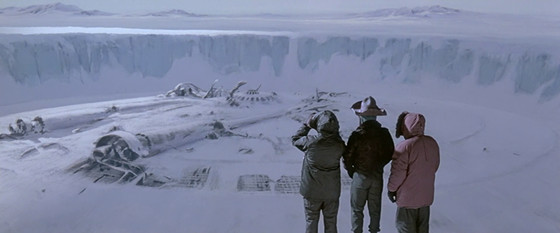
Why it’s great: Unfortunately released in a year when people preferred cutesy aliens instead of murderous shape-shifting aliens, “The Thing” remains one of John Carpenter’s greatest films and one of the best remakes in cinematic history.
Much has been written about the film; most notably, it has often been referenced nostalgically for its use of practical effects, compared to its 2011 prequel where the studio replaced its use of practical effects with CGI, with less than impressive results. Besides that, “The Thing” is a wonderful testament to Carpenter’s skills as a director, both in his use of suspense, dread, and actors. It’s an absolute classic that has deserved all the love it’s received.
The cringeworthy moment: If there was a moment of cringe – though this scene also brings some necessary laughs in a rather bleak picture – it’s close to the beginning when the Norwegians arrive at the camp to kill the alien husky.
One of the Norwegians wants to throw a grenade to the husky, but it slips through his hand, falling in the snow by the helicopter. One of the Norwegians digs himself in there to retrieve it, but is too late, culminating in his explosive death.
It’s a brief shot and you might miss it, but the way the Norwegian lets the grenade slip from his hand is laughably forced. There had to have been a better way to have the Norwegian accidentally blow up the helicopter (maybe during a tussle with Kurt Russell), because it does not look convincing at all.
It does not diminish the film’s greatness, but it’s a little moment of imperfection you can’t help but notice if you have seen the film more than a few times.
8. The dinosaur stampede in King Kong (2005)
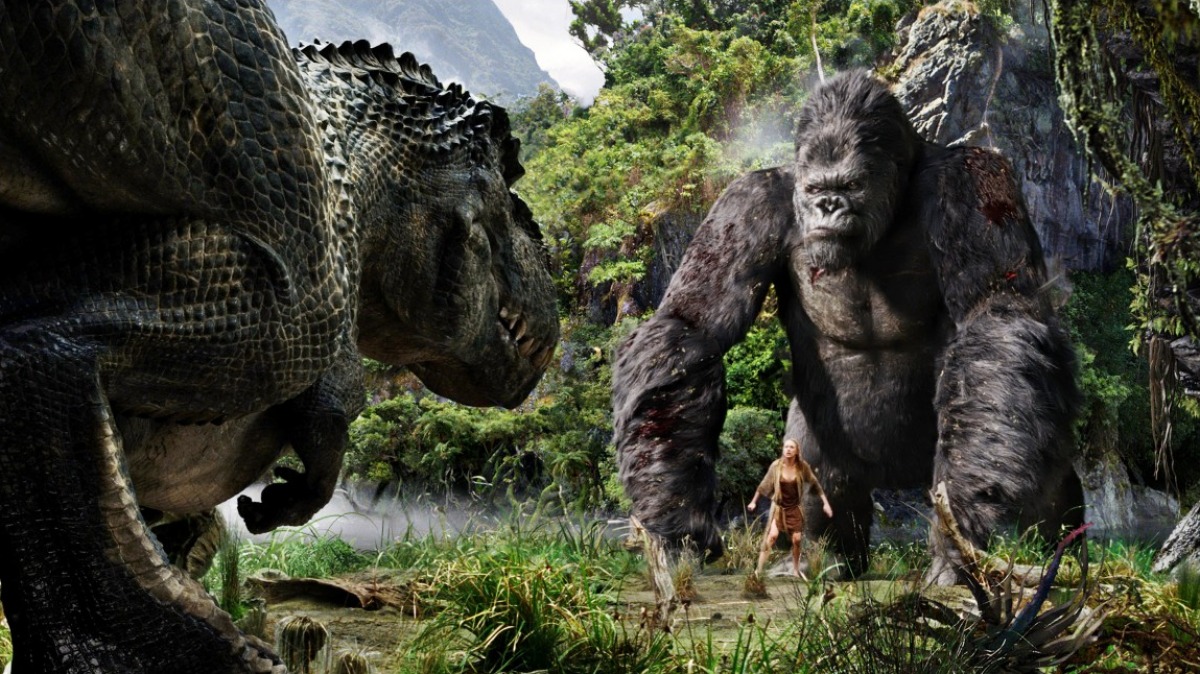
Why it’s great: The original “King Kong” is one of Peter Jackson’s favorite films, so when he decided to film a remake, you knew it wasn’t going to be about an easy cash grab, and it shows. Even if the film has some pacing issues with its bloated runtime, it’s very hard to dislike this film. It contains beautiful cinematography, the beautiful 1930’s period opening, the great casting, and its tender moments that bring us to its greatest achievement, King Kong himself.
The character was a mere beast in the original, but in this version, he’s a lonely soul aching for a connection. His relationship with the main heroine, Ann Darrow (Naomi Watts), is touching.
While Jackson has had trouble with portraying sentimentality on screen – sometimes it’s a little too much – he does it perfectly here, and the way the characters look at each other say everything. There’s also the underrated turn of Jack Black as Carl Denham, the megalomaniacal film director who looks like what would happen if a young Orson Welles would break bad.
The cringeworthy moment: Despite its incredible use of motion-capture (naturally helped along with Andy Serkis’s committed performance) and CGI (King Kong vs. two Tyrannosaurus rex), there is one special effects-heavy scene that failed miserably – the dinosaur stampede.
In this particular scene, Denham and his crew have to run away from a herd of Brontosaurus as they are being hunted by a pack of Ventosaurus. In particular, the shots where the players disappear through the legs of the dinosaur is rather painful.
The scene was either rushed, or the the green-screen effect was simply not yet ready for this. In either case, Jackson showed himself a little too ambitious. It’s a scene quickly forgotten – the film has countless impressive sequences after it – but one has to wonder what went wrong here.
7. The harmonica arms effect at the end of RoboCop (1987)
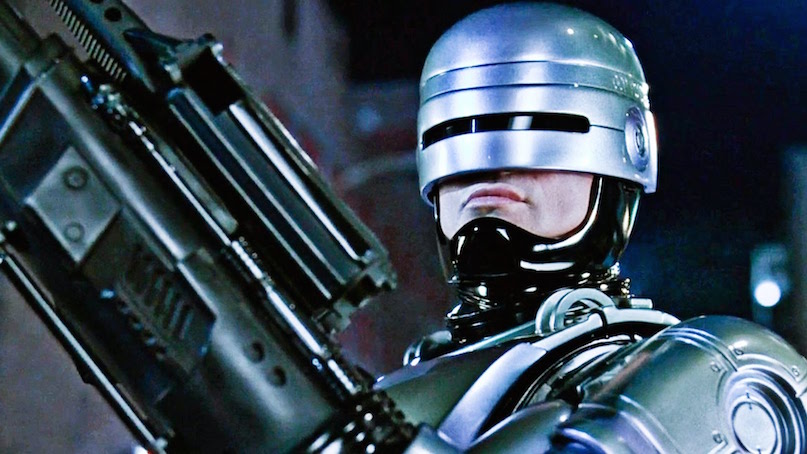
Why it’s great: “RoboCop” is the perfect blend of intelligence and pulp. It’s both a smart social satire and great action schlock – something that has rarely been blended as well as in this film. Many have mentioned its foresight about the future of Detroit, and the greed that eventually bankrupted the state seems to be parodied in this film, which nearly came out 20 years before. Its depiction of corporate America makes this also worryingly prevalent.
At the time, it might have been a critique of Reaganomics, but it’s depressingly fitting with the current status of the United States. Reaganomics, which has morphed into trickle-down economics, has infected the US indefinitely.
Aside from its social satire, however, the film also works perfectly as a simple crowd-pleasing action film. The rousing score by Basil Poledouris is timeless, and the performances are all top-notch. Some of the performances are wonderfully over the top, while some manage to be perfectly menacing (specifically Kurtwood Smith as the secondary villain), but it’s Peter Weller’s performance as RoboCop that is truly underrated. While his robotic mannerisms are perfect for the character, the underlying humanity that rises throughout the film is incredibly moving.
Even though this RoboCop is supposed to be less human than the RoboCop from the 2014 remake, it’s his journey to reclaiming his humanity that makes this story work on an emotional level. The remake, on the other hand, not only deletes the hardcore violence in favor for a more marketable PG-13 rating, but takes away this emotional plot in favor of a supposedly more bland and ”relatable” character that, in turn, makes the character far less interesting.
The original “RoboCop” will forever stand the test of time. It works perfectly as piece of intellectual discourse, but it also works perfectly well with a case of beer and a couple of rowdy friends. Either way, when the old man asks our hero at the end what was his name, and RoboCop turns around, smiles, and answers ”Murphy”, you can’t help but cheer every damn time.
The cringeworthy moment: “RoboCop” remains an 80’s film, so some of the effects might be dated. Luckily, most of it stands the test of time, and some are even better than what we have now. We all miss good old blood squibs in our movies. Tim Burton used some old-school stop-motion effects in “Miss Peregrine”, and “RoboCop” uses it to perfection in the scenes with ED 209.
One scene, however, has a particularly shoddy effect: the demise of Dick Jones (Ronny Cox). While the scene remains perfectly exciting as RoboCop guns him down, seeing him fall down with his oversized harmonica-like arms and then disappearing from nowhere does not work at all.
It works for a laugh for its bad effects, but it should have been more convincing just to make his death more satisfying. It’s only a small moment, and once again, doesn’t diminish its classic status at all, but it’s a small taint to an otherwise perfect movie.
6. Ally Sheedy’s make-over in The Breakfast Club (1985)
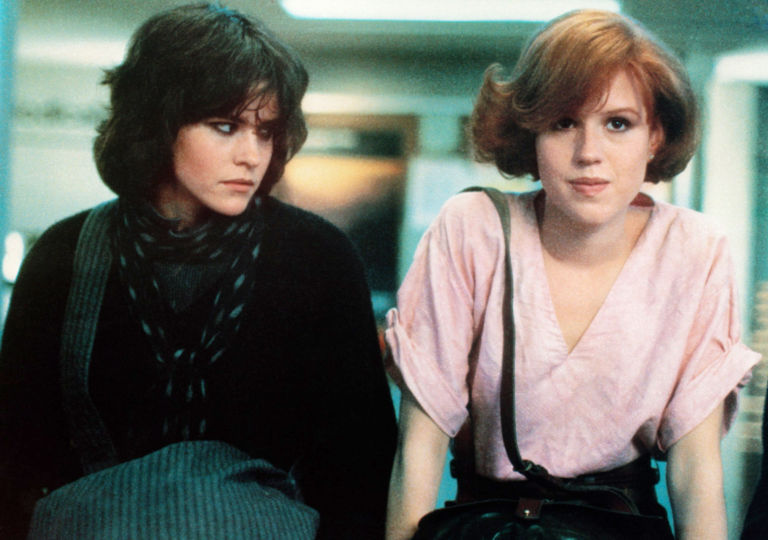
Why it’s great: John Hughes’ high school classic is the staple of high school dramas. Its concept is wonderfully simple; basically a stage play on film, exploring cliched characters such as the princess, the jock, the rebel, the outsider, and the nerd in one setting.
The film, therefore, becomes wonderfully intimate, and even though it’s brimming with cheesy 80’s sentiment, it is endearingly sincere. It’s a product of its time, sure, but a wonderful one. There’s a nice blend of humor throughout the film and the chemistry between the characters is palpable. It would inspire much lesser copies, but none of can come close to this or any of Hughes’ other teenage classics.
The cringeworthy moment: As mentioned before, the film is a product of its time. This might be the reason why one particular character’s transformation seems rather cringeworthy – Ally Sheedy’s character of “the outsider” turning into a princess. It’s something you would see in an outdated Disney film, and in this film, it would have fit much better if she would have embraced her individuality instead of conforming to what seemed popular then.
Perhaps it’s a side effect of the Reagan period, or perhaps Hughes’ fatherly instincts prevailed (fathers would rather see their daughters as prom queens, as we know). In this era, where outsiders are more embraced to look like they want – though often branching into other subcultures with their own conventions – this seems horribly dated. Sheedy looked much better before.